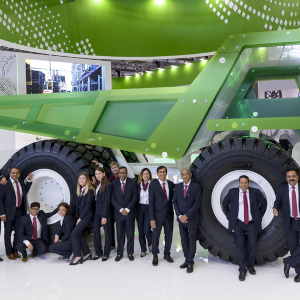What is meant by sustainable agriculture? And how is it achieved? This blog explains the key aspects behind sustainable farming methods, which are critical for a prosperous future in feeding the ever-growing population while meeting net-zero targets.
Sustainability is a key topic for many industries and consumers alike in 2022. As awareness surrounding global warming and the contributing factors have increased, there is an ongoing global push towards more sustainable practices. The agricultural sector is no exception, with many industry leaders pursuing the NetZero targets by 2050 or sooner, such as the National Farmers Union in the UK, which has set the target a decade earlier - for 2040. But what does sustainability in agriculture look like?
What Is Sustainable Agriculture?
In simple terms, sustainable agriculture is the production of plant and animal products that:
-
is profitable for the producers,
-
meets human needs for food and / or textiles, and
-
does not negatively impact the environment.
In 2022, sustainable agriculture also means looking to reduce the number of non-renewables consumed, thus reducing emissions and ultimately, working towards NetZero by 2050.
How can this be achieved?
There are multiple systems and technologies being developed across the world to help propel the agricultural sector forward and improve sustainability practices. Such initiatives include investing in renewable energy sources, as well as implementing robotics and AI technology to improve the efficiency of farmland management and production methods. Our recent BKT Network episode ‘Agriculture Technology and Smart Farming’ explores the latter in more detail.
Whilst these are substantive global developments in the way that the agricultural sector approaches sustainability, what efforts can smaller businesses make to reduce their environmental impact, without detracting from their ability to produce?
The Right ‘At-tire’
Tires can have a large impact on reducing emissions in agricultural activities, though is often overlooked as an important factor in sustainable practice. Ensuring that tires are sufficiently pumped up and at the correct pressure can support proper machine performance, improve machine traction over different terrains and thus reduce machine emissions.
Sourcing tires with a longer life cycle can also play a role in reducing waste and preventing the over production of tires.
Rotating Crops.
One of the earliest forms of sustainable agriculture, crop rotation has been used since as early as 6000 BC! Crop rotation is the practice of planting different crops at the end of a current crop harvest to maintain and improve soil health. Crop rotation helps create nutrients in the soil whilst combating pests and weeds. For example, corn absorbs a lot of nitrogen, so following a corn harvest, farmers may look to plant beans to restore nitrogen into the soil. The core aim is to create balance.
What happens when crops are not rotated? Where the same crops are planted in the same soil on a recurring basis, there is a potential negative impact on the environment. This is because the same nutrients are absorbed on an ongoing basis - stripping the soil and attracting bugs and diseases that have acclimated to a stable environment. Farmers may then turn to harsh pesticides and chemicals to control pests and ensure high crop yields can still be achieved, and in doing so, damaging the natural environment.
Planting Cover Crops.
Planting cover crops is the process of planting crops that are great for soil health, wildlife and the ecosystem when crops for harvest would not usually be there. They are most commonly used over the winter period, to reduce soil erosion, increase soil moisture and nutrient retention.
The USDA explains that the best time to plant cover crops is at the end of summer to ensure that they will be ready by winter. They also offer in-depth guidance about which crops to plant - based on plant properties - to best suit the needs of different farms.
Integrating livestock.
The practice of integrating livestock with arable lands could help encourage balance for agriculture and horticulture by creating a better relationship between agricultural systems. Historically, Integrating livestock was the norm for many years. In more recent years, many agriculturalists are learning the benefits of having both systems integrated together again. This practice has been found to improve soil health and weed management and increase the productivity of arable fields (fields to grow crops).
Going Organic
Organic farming is where farmers utilise products deriving from living matter or natural elements, rather than artificial sources to improve yields and control pests. Whilst many of the practices explored above would come under the umbrella of organic farming, such as cover crops and crop rotation, organic farming itself is the specific non-use of any synthetic products or materials in the production of crops. This includes avoiding synthetic pesticides, which use chemicals and require fossil fuels to produce.
The Weather & Sustainable Agriculture
Whilst some of the practices above may seem simple to implement, there are a number of factors that can complicate the use of sustainable agricultural practices. One leading obstacle is the weather.
Rain-heavy climes (such as that of the UK) allow for very sustainable farming, with lots of natural rain and landscapes consisting of grasslands and meadows. According to UNESCO IHE, and AHDB, rainwater makes up 90% of the water needed to produce red meat and dairy in Britain. However, the terrains in other countries can vary significantly, meaning that additional practices may be needed to ensure sustainable farming.
Here at BKT, sustainability and environmental preservation is a priority, and we are constantly researching and developing new ways to improve our processes. We try to embed sustainability throughout our whole supply chain - from product inception to final product - constantly striving to increase product lifecycle and performance. For more information on our sustainability initiatives, or, to explore our tire ranges, visit our website. Let's grow together.






